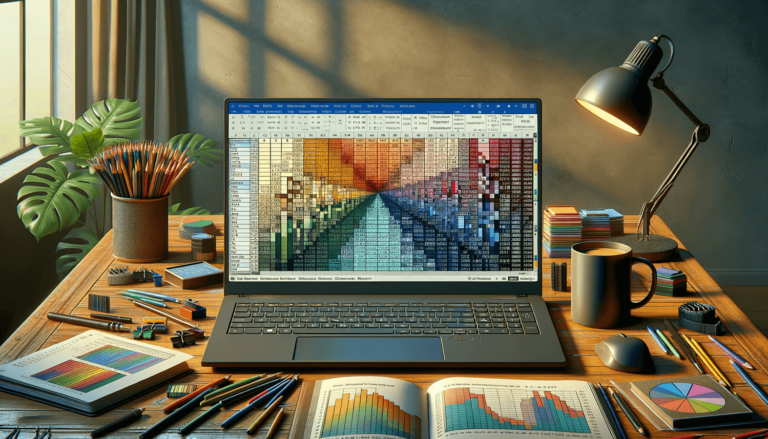5 Easy Ways to Find Color Codes in Excel Sheets

Excel, Microsoft's powerful spreadsheet software, is widely used for data analysis, visualization, and organization. One of the lesser-known but incredibly useful features in Excel is the ability to find color codes. Whether you're looking to match a color scheme for branding, ensure consistency across documents, or simply catalog colors used in a dataset, knowing how to find color codes can be quite beneficial. In this guide, we'll explore five easy methods to locate color codes in your Excel sheets.
1. Using the ‘Color Sampler’ in Conditional Formatting

Conditional formatting in Excel allows you to format cells based on certain rules or criteria. Here’s how you can use it to identify color codes:
- Navigate to the 'Home' tab, find the 'Styles' group, and click on 'Conditional Formatting.'
- Select 'New Rule' and then choose 'Format cells that contain' from the list of options.
- In the 'Format cells that contain' dialogue box, you can set conditions, but for color identification, you don't need to set any specific criteria.
- Click on the 'Format' button to open the 'Format Cells' dialog. Here, you can select the color you want to sample.
- Once you have the color, look for the 'Color' dropdown in the same dialog. The color will be listed with its RGB code or a specific Excel color index. For a HEX code, you might need to convert it manually or use an external color picker.
✅ Note: When using Conditional Formatting for color identification, ensure your conditions do not interfere with the actual data analysis or presentation of the spreadsheet.
2. Utilizing Excel’s Built-in Color Picker

Excel does not have a native color picker tool, but there are clever workarounds:
- Open a cell where you want to add color or change an existing color.
- Click on the 'Fill Color' button in the 'Font' group under the 'Home' tab.
- Choose 'More Colors' at the bottom of the color palette.
- In the 'Colors' dialog, you can move the cursor over the spectrum to sample colors. While you won't see the color code, you can note down the RGB values.
✅ Note: This method is most useful when you're looking to match colors from existing cells or external sources and need to apply the same color to others.
3. Leveraging Add-ins and Online Tools

There are several add-ins and online tools that can make finding color codes in Excel a breeze:
- Add-ins: Tools like 'Colorizer' for Excel or 'ColorCode' can provide immediate color codes.
- Online Tools: Websites like ColorHexa or ColorPicker can convert RGB values from Excel to other formats like HEX, HSL, CMYK, etc.
- Steps:
- Download and install the add-in.
- Select the cell or cells whose color you need.
- Use the add-in or tool to sample the color and obtain the code.
| Tool | Functionality |
|---|---|
| Colorizer for Excel | Provides RGB and HEX values directly in Excel. |
| ColorPicker Online | Converts RGB to various color models online. |

✅ Note: Always verify the compatibility of add-ins with your version of Excel before installation.
4. VBA Macro for Color Code Extraction

For advanced users, VBA (Visual Basic for Applications) can be a powerful tool:
- Open the VBA editor by pressing ALT + F11.
- Insert a new module and write the following code to create a function that returns the RGB value of a cell's color:
Function GetCellColor(Range As Range) As String Dim strColor As String If Range.Interior.ColorIndex = xlNone Then strColor = "No Fill" Else strColor = Range.Interior.Color End If GetCellColor = "RGB(" & Application.WorksheetFunction.RGB(Range.Interior.Color) & ")" End Function - Use the function in a cell like this:
=GetCellColor(A1)to retrieve the color code.
✅ Note: This method provides an automated way to retrieve color codes but requires knowledge of VBA programming.
5. Manual Color Matching

This method might not be the fastest, but it’s universally applicable:
- Print or screenshot your Excel sheet.
- Use a digital color picker or the color sampling tool in photo editing software like Photoshop or GIMP to match the colors:
- Open the image in your photo editor.
- Use the eyedropper tool to select a color from your screenshot.
- The software will typically provide the color code in various formats.
Summing up, we’ve covered a range of methods for locating color codes in Excel, from simple Conditional Formatting techniques to advanced VBA solutions. Whether you’re cataloging colors for future use, ensuring consistency in branding, or simply curious about the colors you’ve applied, these methods provide a way to access the underlying color information in your spreadsheets. Remember that while some approaches might require external tools or add-ins, Excel itself offers native capabilities that, with a bit of creativity, can help you achieve your goals efficiently. By understanding and using these methods, you can make the most out of your data presentation and ensure visual coherence across your documents.
Can I find HEX codes directly in Excel?

+
No, Excel itself does not directly provide HEX codes for cell colors. However, you can convert RGB values to HEX using an online color converter or with a custom VBA function.
How can I apply a specific color by entering its code?

+
You can’t directly type in a HEX code to apply a color in Excel, but you can use RGB values or set custom colors via the ‘More Colors’ option in the Fill Color palette, then manually matching the RGB values.
Is there a way to retrieve the color of multiple cells at once?

+
Using VBA, you can create a function or subroutine to loop through a range of cells and extract color codes in bulk, making the process more efficient for large datasets.